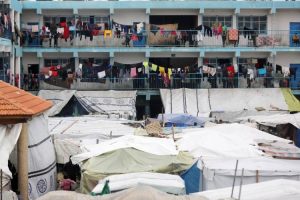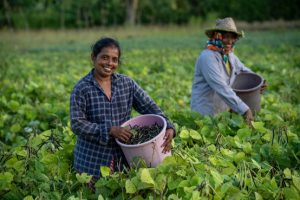RESTON, Virginie, 02 févr. 2024 (GLOBE NEWSWIRE) — Après près de trois mois de succès dans la livraison du GMAT™ Focus Edition, le Graduate Management Admission Council (GMAC) confirme aujourd'hui qu'il s'agit de la seule version de l'examen GMAT disponible pour les candidats à travers le monde. Le GMAC, une association mondiale représentant les principales écoles de commerce, a livré, à l'automne dernier, la version actualisée de l'examen le plus utilisé dans les écoles de commerce, parallèlement au GMAT existant, afin de faciliter la préparation en cours des candidats et leurs demandes d'inscription dans les écoles de commerce.
Lancé pour la première fois il y a sept décennies, le GMAT est la référence en matière d’évaluation et est en continuelle évolution afin de s'assurer qu'il conserve sa rigueur psychométrique tout en restant un indicateur très pertinent de la préparation des candidats aux programmes des écoles supérieures de commerce. Le test a été repensé l'année dernière et se passe de manière plus efficace, tout en présentant de nouvelles fonctionnalités flexibles pour mieux soutenir les candidats dans leur parcours d'études et de carrière dans le commerce.
« Nous avons été rassurés et encouragés par les réactions extrêmement positives que nous avons reçues de la part de nombreuses personnes ayant passé la dernière édition du GMAT et qui envisagent avec plus de confiance de poursuivre leurs études supérieures dans le commerce », a déclaré Joy Jones, PDG du GMAC. « Je pense que nous avons atteint l'objectif que nous nous étions fixé, il y a plus de deux ans, lorsque nous avons commencé à repenser l’examen, à savoir que cette nouvelle édition permet aux candidats aux écoles de commerce de mettre au mieux en avant leurs capacités dans les domaines les plus pertinents et les plus demandés, tels que la pensée critique et l'intelligence des données. Nous sommes convaincus que les écoles de commerce bénéficieront du regain d'intérêt et d'engagement manifesté par un vivier de candidats plus large et plus inclusif à l'échelle mondiale. »
Le GMAC a dévoilé le GMAT Focus Edition après avoir mené des recherches approfondies impliquant des centaines de professionnels de l'enseignement ainsi que des tests conceptuels approfondis auprès de milliers d'étudiants potentiels dans le monde entier. Avec seulement trois sections de 45 minutes, dont la nouvelle section Data Insights, cette édition est raccourcie de près d'une heure par rapport à la version précédente du GMAT et nécessite moins de contenu en termes de préparation. Bien que la version précédente du GMAT ne soit plus disponible, ses résultats restent valables pendant cinq ans. Les candidats et les écoles ont reçu des informations utiles leur permettant d'utiliser facilement les résultats des deux éditions de l'examen pendant cette période.
« La nouvelle conception rend l'examen plus ciblé, plus accessible et moins intimidant. Mais plus ciblé ne signifie pas plus facile ou moins utile. Cela signifie simplement plus intelligent », a déclaré Rodrigo Malta, directeur général du recrutement et des admissions au MBA à la McCombs School of Business de l'université du Texas.
Sun Long, directeur général du programme international du MBA à l'université chinoise de Fudan, a souligné que son école faisait partie des nombreuses grandes écoles de commerce du monde entier à avoir une opinion positive de la dernière version du GMAT. « Cette édition nous a permis de mieux répondre aux besoins des candidats aux programmes du MBA tout en améliorant la sélection des talents côté écoles de commerce dans un environnement commercial en constante évolution. »
À propos du GMAC
Le GMAC (Graduate Management Admission Council) est une association qui regroupe les principales écoles supérieures de commerce du monde entier. Le GMAC effectue des recherches de premier plan, organise des conférences sectorielles, fournit des outils de recrutement et des évaluations pour le secteur des études supérieures en gestion, ainsi que des ressources, des événements et des services qui aident à accompagner les candidats tout au long de leur parcours dans l’enseignement supérieur. Détenu et géré par le GMAC, l’examen Graduate Management Admission Test™ (GMAT™) est l’évaluation la plus couramment utilisée dans les écoles supérieures de commerce.
Chaque année, plus de 12 millions de futurs étudiants consultent les plateformes du GMAC, dont mba.com, GMAC Tours et BusinessBecause, pour se renseigner sur les programmes du MBA et de master de commerce, entrer en contact avec des écoles du monde entier, se préparer et s’inscrire aux examens et obtenir des conseils sur la manière d'atteindre avec succès leurs objectifs d'études et de carrière dans le domaine du commerce. Le GMAC est une organisation mondiale dont les bureaux se trouvent en Chine, en Inde, au Royaume–Uni et aux États–Unis.
Pour en savoir plus sur notre travail, veuillez consulter www.gmac.com
Contact auprès des médias :
Teresa Hsu
Responsable en chef, relation média
Téléphone portable : 202–390–4180
thsu@gmac.com

GLOBENEWSWIRE (Distribution ID 9031305)








